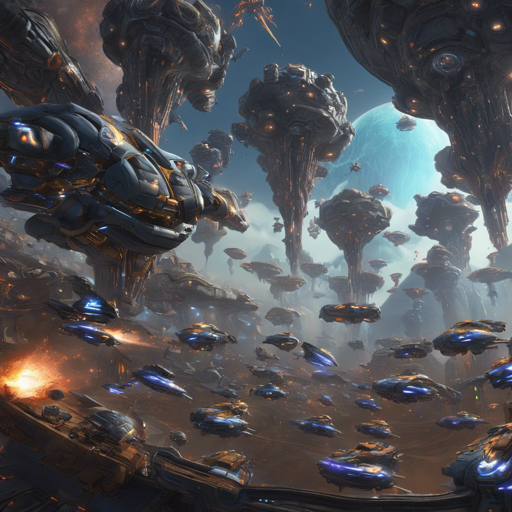Welcome to the exciting world of multi-agent reinforcement learning (MARL) in the classic game of StarCraft II! In this guide, we will walk through the implementation of state-of-the-art MARL algorithms using PyTorch, specifically designed to tackle decentralized micromanagement scenarios in StarCraft II. Grab your coding tools and let’s dive into the action!
Understanding Key Algorithms
The algorithms we’ll be working with include:
- IQL: Independent Q-Learning
- QMIX: Monotonic Value Function Factorisation for Deep Multi-Agent Reinforcement Learning
- VDN: Value-Decomposition Networks For Cooperative Multi-Agent Learning
- COMA: Counterfactual Multi-Agent Policy Gradients
- QTRAN: Learning to Factorize with Transformation for Cooperative Multi-Agent Reinforcement Learning
- MAVEN: Multi-Agent Variational Exploration
- CommNet: Learning Multiagent Communication with Backpropagation
- DyMA-CL: From Few to More: Large-scale Dynamic Multiagent Curriculum Learning
- G2ANet: Multi-Agent Game Abstraction via Graph Attention Neural Network
Each of these algorithms has its unique approach to multi-agent training, and we will set them up to execute in the StarCraft environment.
Setting Up Your Environment
Before we begin coding, make sure to install the necessary requirements. You can do this by running:
pip install -r requirements.txtThe required packages include:
Quick Start Guide
To start training with the QMIX algorithm on the “3m” map, use the command:
python main.py --map=3m --alg=qmixFor CommNet and G2ANet, attach an external training algorithm like REINFORCE:
python main.py --map=3m --alg=reinforce+commnetTo simply run evaluations, include the flags --evaluate=True --load_model=True.
Troubleshooting Common Issues
If you encounter issues while training or running your algorithms, try the following troubleshooting steps:
- Ensure that all required packages are properly installed and updated.
- Verify that the paths set in
.commonarguments.pyare correct, particularly for the replay directory. - If training fails, check the compatibility of the algorithms with the selected map configuration.
For more insights, updates, or to collaborate on AI development projects, stay connected with fxis.ai.
Understanding Results
The performance of the algorithms is evaluated by running them independently multiple times—eight runs in our case—and averaging the results. The win rates can be visualized, and you may refer to the results of maps like “3m”, “8m”, and “2s3z” in the corresponding images saved during training.
Replay Analysis
If you wish to view replay data, ensure the replay_dir is set to an absolute path in the .commonarguments.py. Evaluation replays will be generated and stored in the specified directory.
Wrapping Up
At fxis.ai, we believe that such advancements are crucial for the future of AI, as they enable more comprehensive and effective solutions. Our team is continually exploring new methodologies to push the envelope in artificial intelligence, ensuring that our clients benefit from the latest technological innovations.
Conclusion
By following this guide, you have learned how to implement and run various MARL algorithms in the context of StarCraft II using PyTorch. The insights gained from experimenting with these techniques not only improve your understanding but also pave the way for exciting innovations in multi-agent systems. Happy coding!

